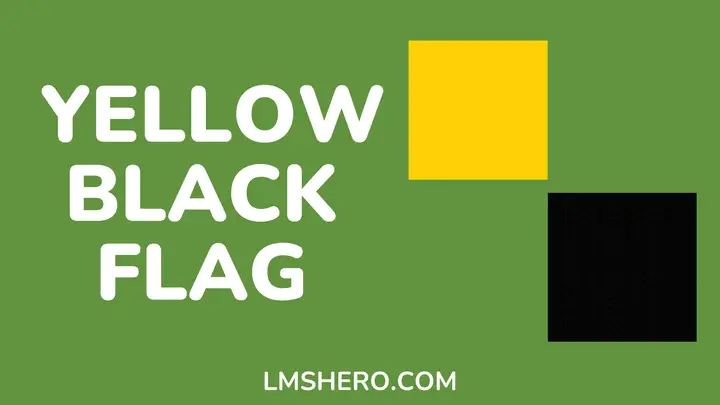Wondering which country has yellow and black colors on its flag? This article has what you need. While there is no national flag with only these two colors, many flags combine yellow and black with other colors.
This article highlights 12 countries that have yellow and black on their flags. Read on.
What countries have yellow and black flags?
1. Jamaica
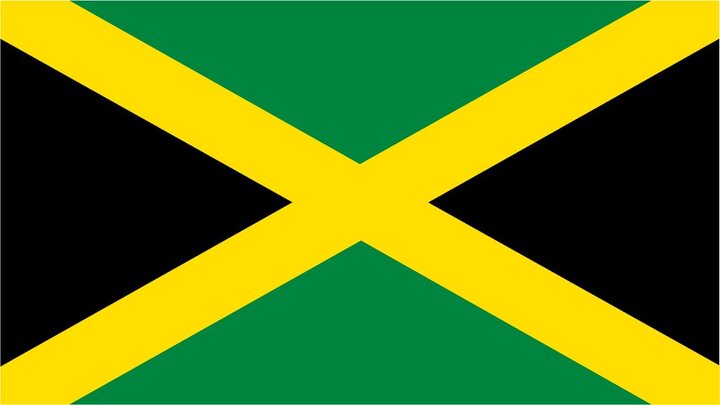
Jamaica adopted its flag on the 6th of August 1962 after gaining independence from the Commonwealth of the West Indies.
The flag has a yellow saltire that divides the flag into four parts, two of which are green and the other two are black. The yellow saltire represents the sun’s beauty and the people’s wealth.
Black depicts the strength and creativity of Jamaicans; green speaks of available agricultural resources and the people’s hope.
2. Germany
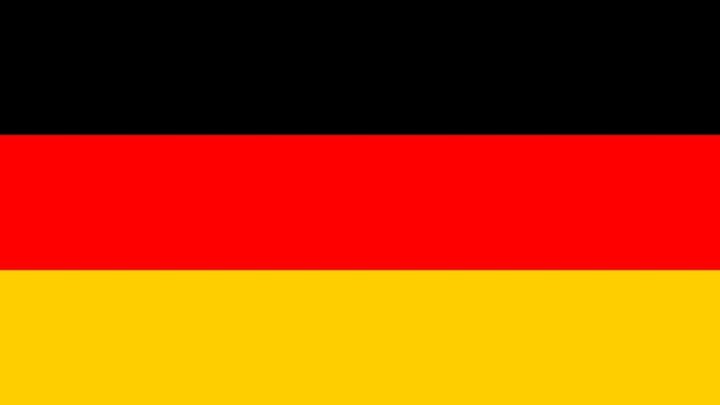
The German flag contains an equal horizontal black, red, and yellow band. Black is at the top, red is in the middle, and yellow is at the bottom. The flag was first introduced to the German Confederation in 1848.
These colors can be traced back to the idea of republican democracy in the mid-1800s as a symbol of unity and freedom.
These colors represented centrists, democrats, and republicans during the Weimar Republic.
3. Belgium
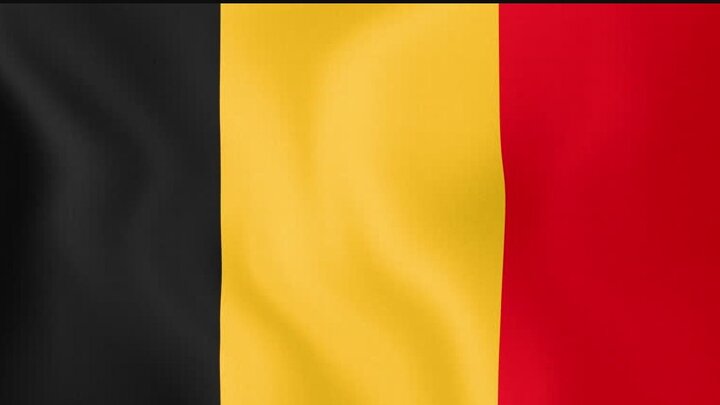
Belgium’s national flag features three vertical black, yellow, and red stripes. The country adopted its flag on the 23rd of January 1831.
The flag is similar to Germany’s but black on the left, yellow in the middle, and red in a vertical arrangement at the center.
The colors are constitutionalized to be Belgium’s official color. Black depicts humility, yellow represents prosperity, and red signifies victory.
4. Angola
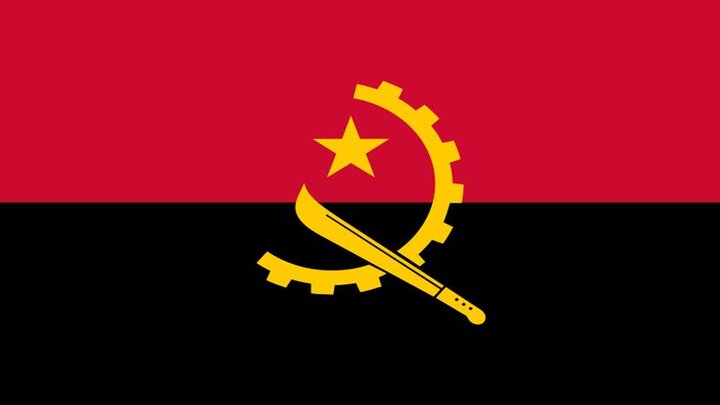
The flag of Angola features equal horizontal bands on a red and black background. In the background are a yellow machete and a gear logo, like an old Soviet hammer and sickle.
A yellow star is also inside the gear, symbolizing unity and progress.
The machete and gear represent the struggle for independence of the agricultural workers and the country. Angola adopted the flag when it gained independence on 11 November 1975.
5. Vanuatu
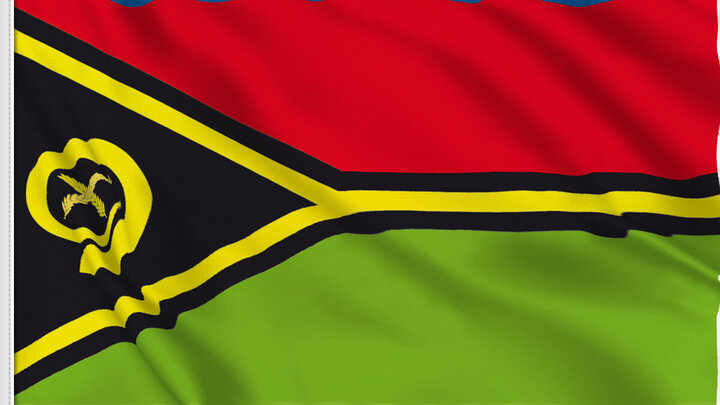
The flag of Vanuatu consists of a horizontal band on a red and green background with a black hanging triangle and a horizontal yellow Y with a black border.
The triangle contains two intersecting leaves, surrounded by pig tusks. Vanuatu’s official flag was first raised on July 30, 1980, when it gained independence.
The current flag is slightly modified from a 1977 design by local Vanuatu artist Kalontas Malon.
The black triangles symbolize the island’s fertile soil. The green stripes depict the island’s lush vegetation, while the reds represent the religious traditions of the local people.
Pig sacrifice is a familiar religious ritual in Vanuatu, so the dark red stripes represent pig blood.
The pig tusk logo on the triangle further acknowledges the importance of the ceremony to Vanuatu.
At the same time, the yellow Y that extends from the lift to the end of the flag depicts the layout of the island of Vanuatu.
Yellow itself symbolizes peace and Christian faith. The motto “We stand with God” on the coat of arms reflects their belief in God.
6. Uganda
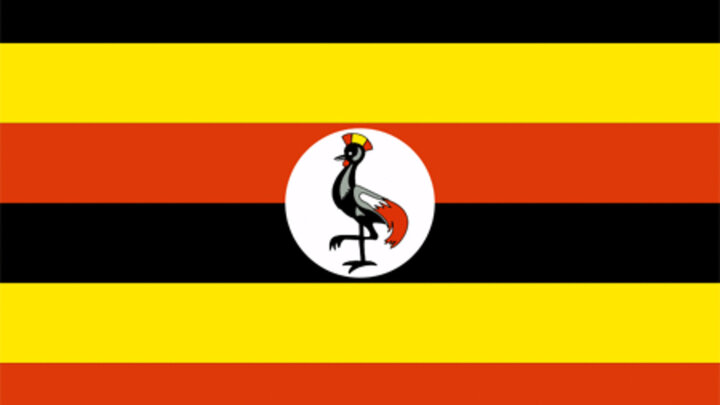
Uganda raised its flag on Independence Day, October 9, 1962. The top of the flag has six equal horizontal bands of black, yellow, red, and the same color, making it six.
In the middle of the flag is a white disc and a grey-crowned crane facing the side of the crane. Black, yellow, and red colors are pan-African colors.
Yellow represents African sunshine, red represents brotherhood, and black represents African heritage.
The white disc in the center is the national symbol of Angola, and the gray red-crowned crane represents the gentleness of the country.
The crane was also the military emblem during colonial rule. The lifting leg of the crane symbolizes the advancement of the nation.
7. Antigua and Barbuda
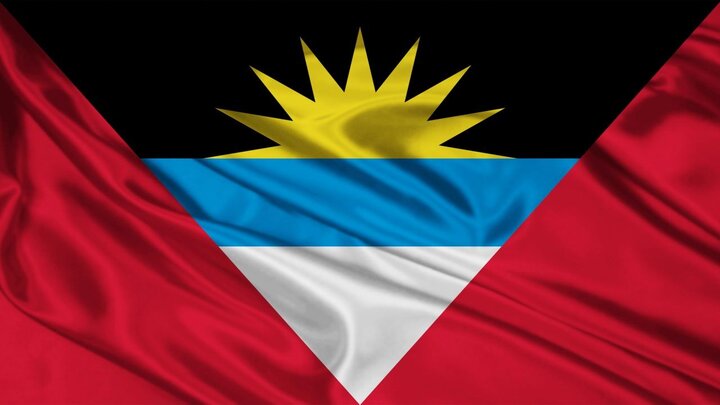
Antigua and Barbuda celebrated its independence with a flag on February 27, 1967. The country held a flag design competition with more than 600 participants.
Sir Reginald Samuel won the competition with the best flag design used by Antigua and Barbuda today.
The flag features a red background with an inverted triangle in the middle that touches the top and bottom of the flag.
Within the triangle are the tricolor bands of black, light blue, and white, with the rising sun at the top of the blue stripe.
Red symbolizes the vitality and life of the people, black depicts African ancestry, blue represents hope, and white represents peace. The rising sun symbolizes the arrival of a new era.
The seven points on the sun represent Barbuda and the six parishes of the island of Barbuda. The triangle is a symbol of victory.
8. Swaziland
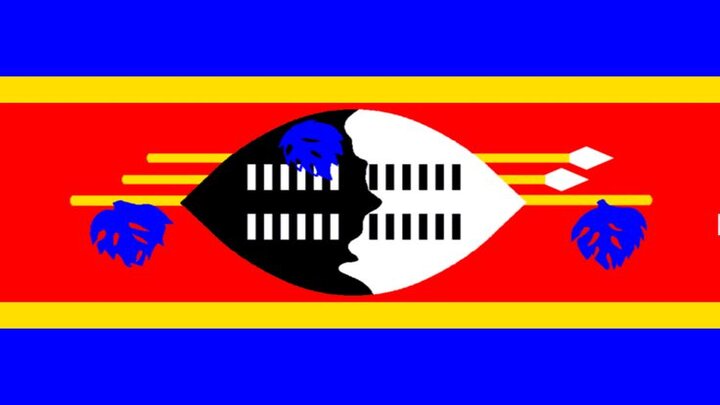
Swaziland adopted its flag after gaining independence from the British Empire on October 6, 1968.
The flag designed by King Sobhuza II contains a black and white shield with a staff and two spears on a background of blue, yellow, and red horizontal stripes.
The shield symbolizes the traditional shield used by famous Swazi warriors in battle. It is made of black and white cowhide and covers a wooden frame.
Red represents past battles, yellow represents mineral wealth, and blue represents peace.
The central focus of the flag is a Nguni shield and two spears, symbolizing the country’s protection from its enemies.
9. Dominica
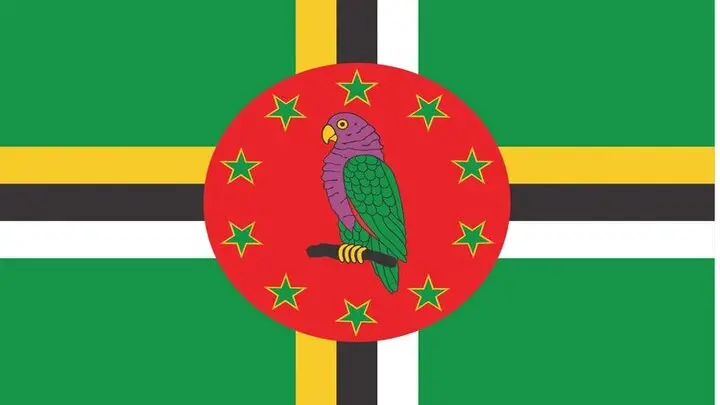
Dominica adopted its flag on November 3, 1978. The flag was designed by Alvin Billy in 1978 but underwent some modifications until its final revision in 1990.
The flag has a green area with yellow, black, and white crosses that extend to each corner of the central flag.
Sitting in the middle of the cross is a red disc, a purple sisserou parrot facing the lift, and ten green stars surrounding the parrot.
The green fields represent the lush vegetation on the island. The cross symbolizes their Christian faith, and the colors depict the fertile soil, the people, and the island’s clean water.
The red disc represents justice, and the purple sisserou parrot is an endangered bird, with around 250 – 300 found in Dominica. The 10 green stars are the 10 parishes found in the country.
10. Mozambique
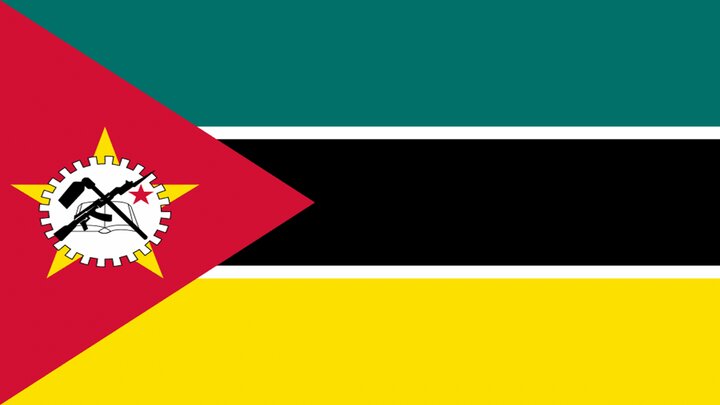
The flag of Mozambique was adopted on May 1, 1983. It features a green horizontal band at the top, a black one with a white border in the middle, and a yellow bottom. The flag’s left corner is a red triangle with a star in the center.
On the star is an open book with a Kalashnikov rifle, a bayonet in the barrel, and a hole through it. Open books represent their interests and priorities in education, rifles depict vigilance and defense.
The home symbolizes agriculture, and the star symbolizes the Mozambican spirit of international solidarity. Green represents the wealth of the land, and yellow represents the country’s mineral resources.
The white bar represents peace, the black represents the African continent, and the red symbolizes the struggle for independence.
Mozambique is one of four countries with guns on its flag.
11. Zimbabwe
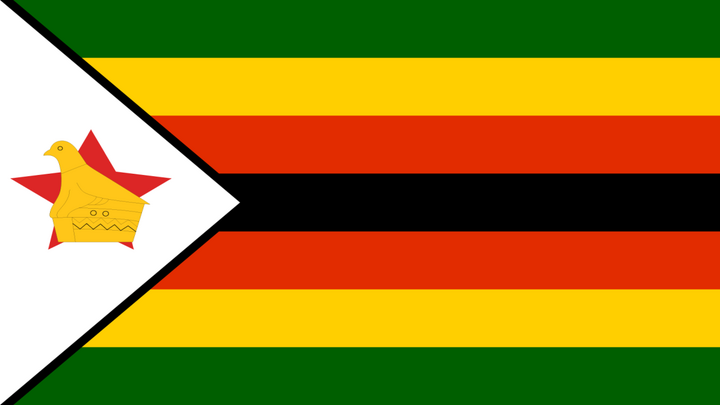
Zimbabwe adopted its current flag on April 18, 1980.
The flag contains seven equal horizontal bands, green, yellow, red, and black, and another round of red, yellow, and green. On the left side of the flag is a white triangle with a red star and a Zimbabwe bird.
The talc bird on the flag is a statue of a bird found in the ruins of Great Zimbabwe, representing the people’s history.
The red star symbolizes socialism, the aspirations of the nation, and the struggle for freedom and peace.
Red represents the blood spilled in the struggle for freedom, yellow represents the country’s mineral resources, black represents black people, and white triangles represent peace.
12. Saint Lucia
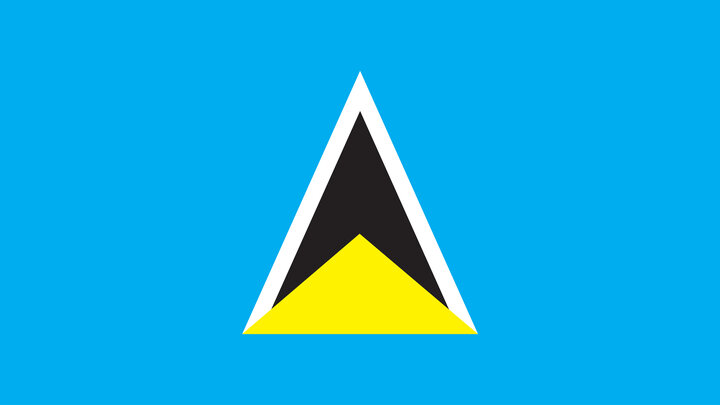
Saint Lucia adopted its flag in 1967 and is also a Commonwealth country associated with the United Kingdom.
The flag of Saint Lucia consists of an azure blue area with a yellow triangle connected to a black isosceles triangle with a white bar in between.
The blue background represents the sky and sea, especially the Atlantic and Caribbean seas that surround the region.
The black and white triangle refers to the unity and harmony of the white and black races of the country.
The triangles symbolize the rock spikes, the twin volcanic cones, Gros Piton and Petit Piton, found in the southwest of the island.
The yellow of the triangle depicts the sunshine and prosperity of the country.
FAQs
Which country’s flag has seven colors?
The Zimbabwe flag has seven colors: red, yellow, green, and black.
Which country has guns on its flag?
Four countries, including Mozambique, Guatemala, Haiti, and Bolivia, have guns on their flags.
Conclusion
For many countries, the yellow color on the flag is often associated with happiness, warmth, and sunshine. Black, on the other hand, mainly represents Africans or black people.
Also, all the other colors on the national flags highlighted in this article have their meaning and meaning. For example, white mainly represents peace, and red may mean blood.
Read this article to see countries with red and yellow flags.
I hope this article helps. Thanks for reading.
